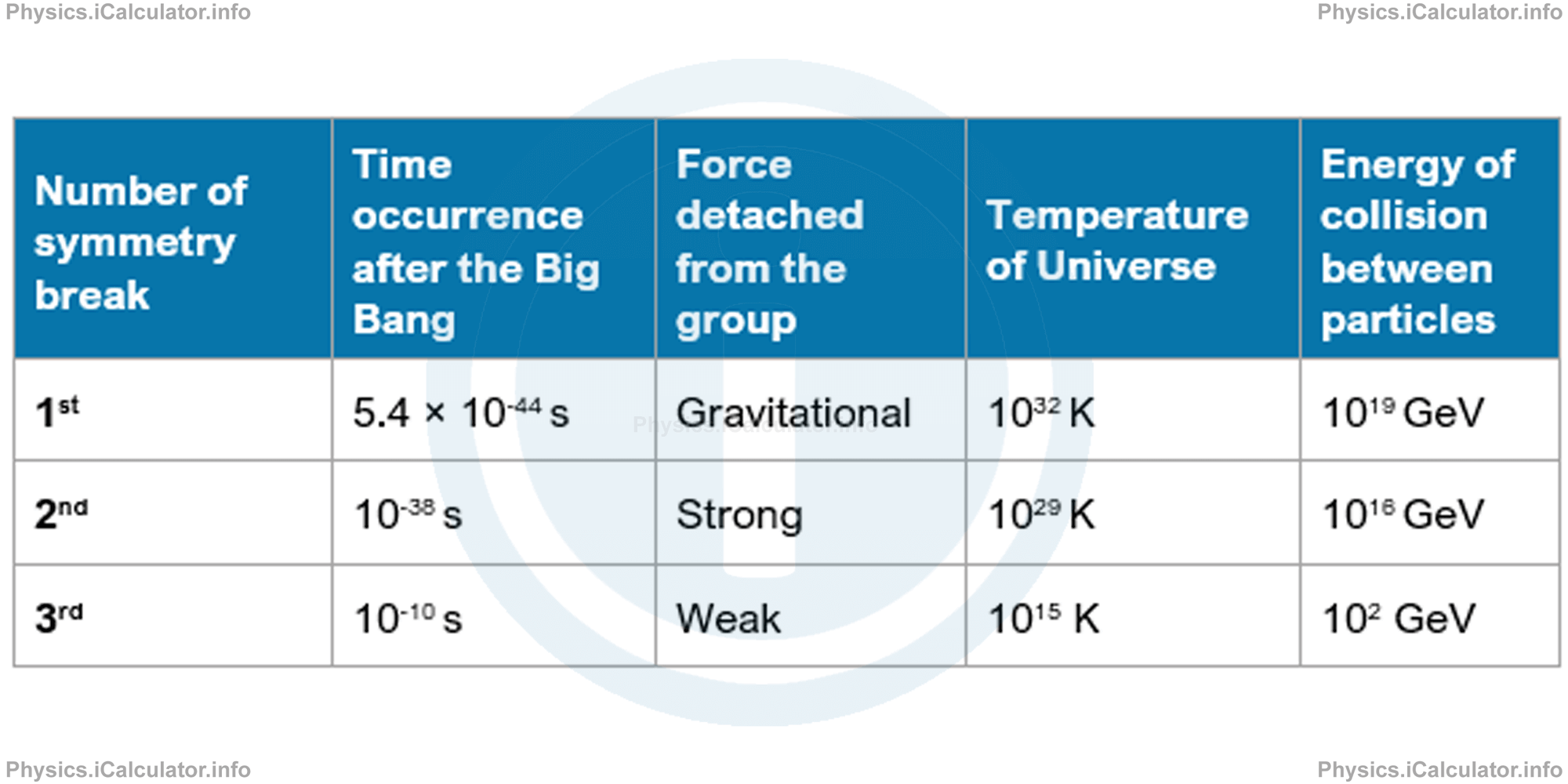Menu
Physics Lesson 22.11.1 - Time and Energy
Please provide a rating, it takes seconds and helps us to keep this resource free for all to use
Welcome to our Physics lesson on Time and Energy, this is the first lesson of our suite of physics lessons covering the topic of Chronology of the Universe, you can find links to the other lessons within this tutorial and access additional physics learning resources below this lesson.
Time and Energy
We have to put the events in chronological order to describe all stages of the Universe since its beginning to its current state. For this, we use the concept of cosmic time - a time that flows equally in all parts of the Universe, as explained in 22.9.
When analysing thermodynamic parameters as a function of time, scientists have found the relationship between thermal energy E and cosmic time t valid for the first instants of the universe:
This relation means that at a given time instant t after the Big Bang expressed in microseconds, the square of collision energy exchanged between two particles in the Universe (in GeV) is inversely proportional to the time elapsed since the Big Bang occurrence.
Combining the above relation with the known relation we provided in the previous tutorial
this allows us make the distinction between various stages of the Universe at the first few seconds of its existence. We have
Since k is also a constant (Boltzmann constant) we can remove it from the above relation of proportionality. Thus, we obtain
where T is the temperature of the Universe at the given instant.
We discussed the three symmetry breaks in the previous tutorial (in the paragraph of forces unification), namely electroweak, electro-strong and gravitational interaction (when the energy exchanged by particles during collisions has the value of Planck's energy). These symmetry breaks correspond to three different stages of the primordial Universe. Let's calculate at what instants after the Big Bang these symmetry breaks have occurred.
Planck's energy (Ep = 1019 GeV) corresponds to a temperature of T = 1032 K. The formula used to calculate this time is
It derives from the formula
we found in the last paragraph of the previous tutorial. Substituting the known values, we obtain
= √0.029 × 10-85 s2
= 5.4 × 10-44 s
This value is known as Planck's time. It represents the instant after the Big Bang, since which we have information on the processes occurred in the primordial universe. The uncertainty principle of Heisenberg prevents us from taking into consideration time intervals shorter than this. Planck's time acts as a "border" that separates the gravitational interaction from the other three types of interaction. It also connects the general relativity with quantum theory.
As for the second symmetry break, it occurred when the strong interaction separated from the other two (weak and electromagnetic). As explained in the previous tutorial, this phenomenon has occurred when the Universe was at T = 1029 K, that corresponds to a value of 1016 GeV of energy i.e. 10-38 seconds after the Big Bang.
The third (and last) symmetry break has occurred when the weak interaction separated from electromagnetic one; it corresponds to 10-10 s after the Big Bang, when the energy exchanged between any two particles was 100 GeV and temperature of universe was 1015 K.
The following table summarizes all that we have covered above about the symmetry breaks and the related phenomena.

You have reached the end of Physics lesson 22.11.1 Time and Energy. There are 6 lessons in this physics tutorial covering Chronology of the Universe, you can access all the lessons from this tutorial below.
More Chronology of the Universe Lessons and Learning Resources
Whats next?
Enjoy the "Time and Energy" physics lesson? People who liked the "Chronology of the Universe lesson found the following resources useful:
- Time Feedback. Helps other - Leave a rating for this time (see below)
- Cosmology Physics tutorial: Chronology of the Universe. Read the Chronology of the Universe physics tutorial and build your physics knowledge of Cosmology
- Cosmology Revision Notes: Chronology of the Universe. Print the notes so you can revise the key points covered in the physics tutorial for Chronology of the Universe
- Cosmology Practice Questions: Chronology of the Universe. Test and improve your knowledge of Chronology of the Universe with example questins and answers
- Check your calculations for Cosmology questions with our excellent Cosmology calculators which contain full equations and calculations clearly displayed line by line. See the Cosmology Calculators by iCalculator™ below.
- Continuing learning cosmology - read our next physics tutorial: Formation of Galaxies and Solar System. Actual Problems
Help others Learning Physics just like you
Please provide a rating, it takes seconds and helps us to keep this resource free for all to use
We hope you found this Physics lesson "Chronology of the Universe" useful. If you did it would be great if you could spare the time to rate this physics lesson (simply click on the number of stars that match your assessment of this physics learning aide) and/or share on social media, this helps us identify popular tutorials and calculators and expand our free learning resources to support our users around the world have free access to expand their knowledge of physics and other disciplines.